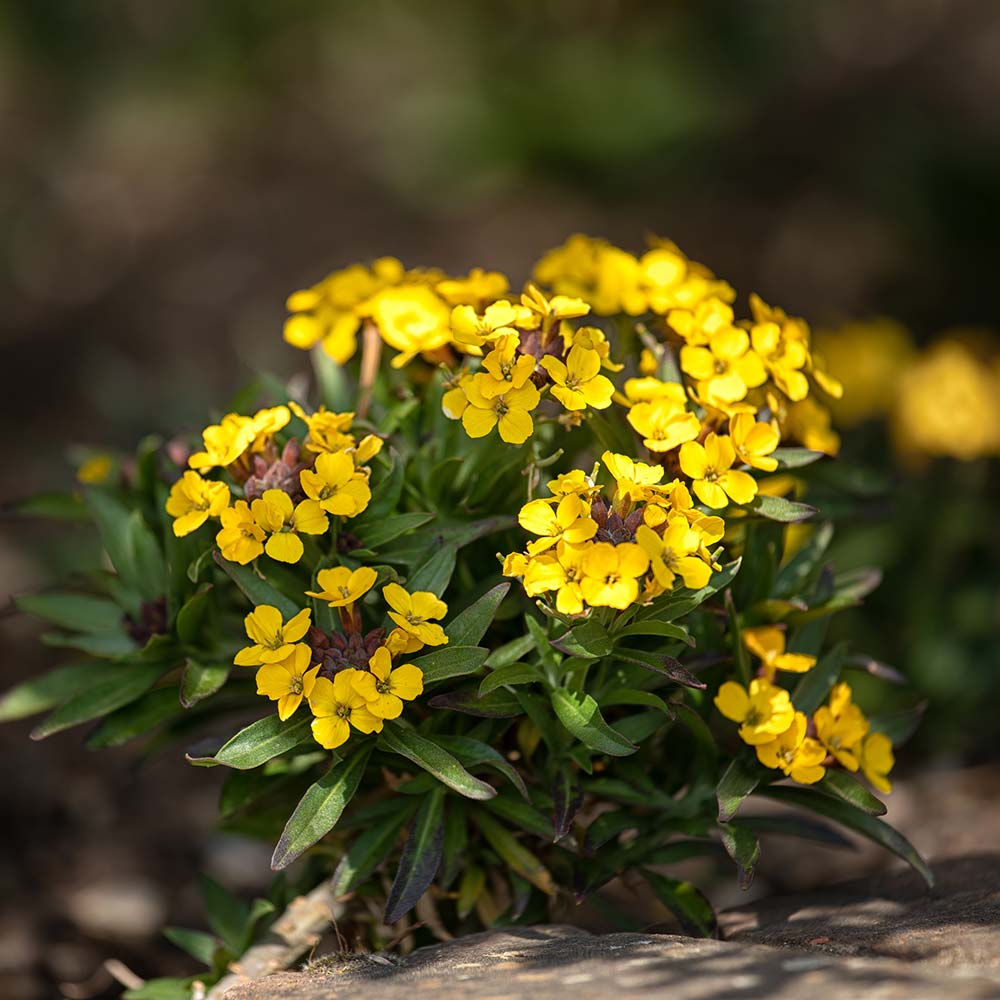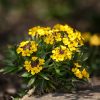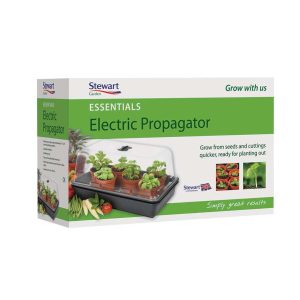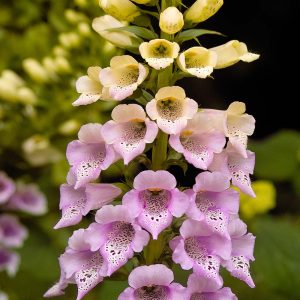Description
Erysimum, commonly known as wallflower, is a genus of flowering plants in the Brassicaceae family. These biennial or perennial plants are native to Europe and Asia, and are often cultivated for their showy and fragrant flowers. Erysimum species are popular in cottage gardens and are often used in borders, rock gardens, and containers. Their flowers range in color from yellow and orange to purple and blue, and bloom from spring to summer. Some popular cultivars include Erysimum ‘Bowles’s Mauve’, which has mauve-pink flowers, and Erysimum ‘Apricot Twist’, which has apricot-colored flowers. These plants prefer full sun and well-drained soil, and can be paired with other cottage garden favorites such as delphiniums, foxgloves, and lavender.
Key Facts
- Common Name(s):Common Wallflower ‘Gold Dust’
- Hardiness:Fully hardy through most of the UK
- How big will I get? Erysimum suffruticosum ‘Goldstaub’ can grow to a height of 0.5m and a spread of 0.5m.
- Did You Know That: The name wallflower derives from the fact they can grow successfully in loose wall mortar so would literally be flowering out of the wall
Plant Calendar
A rough guide to how this plant will change through the year.
| Jan | Feb | Mar | Apr | May | June | July | Aug | Sept | Oct | Nov | Dec | |
| Flowering Time |  |
 |
 |
|||||||||
| Foliage Colour |  |
 |
 |
 |
 |
 |
 |
 |
 |
 |
 |
 |
| J | F | M | A | M | J | J | A | S | O | N | D |
 |
 |
 |
|||||||||
 |
 |
 |
 |
 |
 |
 |
 |
 |
 |
 |
 |
Care Guide

Soil Requirements
Erysimum suffruticosum ‘Goldstaub’ prefers soil with good drainage and does not tolerate standing water. This plant is not tolerant of acidic soil, it requires either a neutral or alkaline soil to grow.

Best Position
Erysimum suffruticosum ‘Goldstaub’ can handle either an exposed or a sheltered position and requires full sun to thrive, this consists of more than six hours of direct sunshine per day.

Maintenance
Erysimum suffruticosum ‘Goldstaub’ is fairly low maintenance and doesn’t require any pruning.

Pest, Diseases and Wildlife
Erysimum suffruticosum ‘Goldstaub’ can have problems with slugs and snails, it can be vulnerable to certain diseases such as downy mildew. It is also known to attract bees, butterflies and other pollinators. It is not considered to be toxic.





